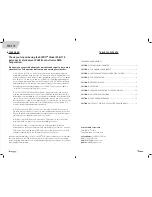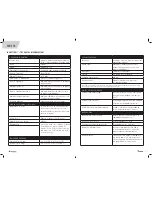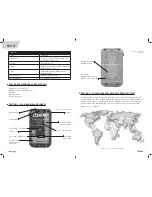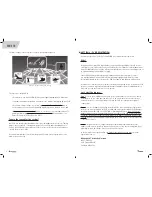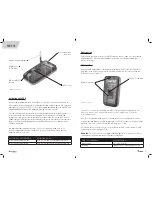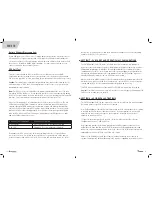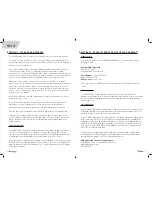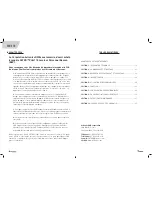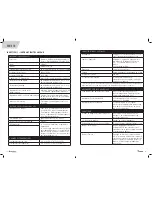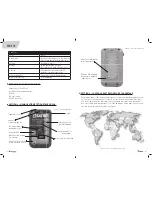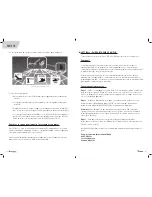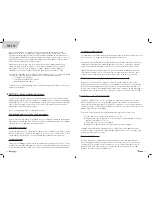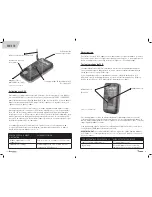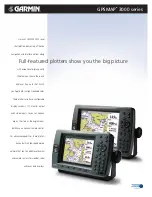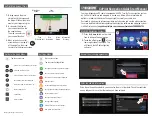
12
11
PLB-110
Battery Witness Electronic Seal
If your PLB passes a Self Test, there is enough battery power for the unit to operate for
at least 24 hours. If you used more than 1 hour of battery life and therefore broke the
electronic seal, the Self Test will signal a failure with a red LeD. When you send the PLB
in for service, the battery will be replaced and the electronic witness will be reset to
ensure you have 24 hours of battery power.
GPS Self Test
This test is not required as 100% of all gPS receivers that leave Astronics DMe
Corporation have been tested to ensure they perform correctly. However, if you would
like to ensure your gPS receiver is working, please follow these instructions very closely.
Caution: The following test should not be performed more than 12 times during the life
of the battery pack. once this gPS testing feature reaches 12 times, the feature will be
disabled by internal software.
note: The gPS receiver is located under the bottom front portion of the case. The area
is marked “gPS Do Not Cover.” It is imperative that the receiver is not obstructed during
gPS Self Test or activation to ensure that the gPS receiver is acquiring your LAT and LoN
positions. This test must be performed outside with a clear view to the sky.
Press the Test button for 5 seconds. observe the PLB for the entire gPS test. The red
LeD will flash until LAT/LoN coordinates have been obtained or until 2 minutes have
elapsed. If good LAT/LoN data has been obtained, a single 406 MHz test burst will be
sent out, the gPS will be turned oFF, and the white strobe will flash. The white strobe
indicates the gPS is functioning properly. If the gPS does not acquire good LAT/LoNg
data, the gPS will turn oFF after 2 minutes, followed by a red LeD light for 3 seconds,
and no 406 MHz test burst sent out.
Remember, the gPS can only be checked a maximum of 12 times. If your PLB has
reached 12 self tests, it will turn on the red LeD for 1 second and turn off the beacon.
If there are fewer than 4 gPS tests left (1, 2, 3) the red LeD will flash from 1 to 3 at the
gPS SeLF TeST SeqUeNCe
gPS SeLF TeST gUIDe
White Strobe
Successful gPS Test – coordinates obtained
Red LeD
Failed gPS Test – no coordinates obtained
interval of 1 second on and 1 second off to indicate the number of gPS tests remaining,
and then the gPS Self Test will start.
SECTIOn 7 – PLB CaRRY anD OPERaTIOnaL COnFIGURaTIOnS
The SATRo
TM
Model PLB-110 can be carried in your shirt or pant pocket; backpack
pocket; personal flotation device pocket; in a flight suit or flight vest pocket; in a survival
kit/abandon ship bag; packed inside a life raft; packed inside life vest bag; in the glove
compartment of a vehicle; or carried in some other personal apparel item provided it is
not exposed to high temperatures for long periods of time (weeks), altitude exposure is
limited to 25,000 feet above mean sea level and is not crushed.
When activated the SATRo
TM
Model PLB-110 can be placed on the ground; placed on the
flat surface on a vehicle; or held in the hand. In each case the gPS receiver must not be
covered and the gPS receiver and antenna must be pointed up to the sky.
This PLB is not a substitute for a required eLT or ePIRB. It is intended to be used by
individuals in remote areas as a means to alert others of an emergency situation and aid
SAR forces in locating those in distress.
SECTIOn 8 – aCCIDEnTaL aCTIVaTIOnS
The SATRo
TM
Model PLB-110 has a protective cover for the on/off switch which should be
left closed whenever the PLB is inactive or activated.
If the PLB should be accidentally activated then turn the PLB off and report the activation
to the SAR authorities in your country of residence. If it is not possible to contact SAR
authorities in your country of residence then report the activation to your nearest
embassy as soon as practical.
To report accidental activations in the USA call the United States Air Force Rescue
Coordination Center at 1-855-406-8724.
Be prepared to provide the following information to SAR or embassy authorities: the
unique identification number of your PLB (located on the PLB), approximate time and
date of the activation and deactivation of the PLB, cause of the accidental activation and
approximate location of the PLB at the time of activation.
Misuse of the PLB may result in fines from the national authority in the country of
residence and from the national authority in the country responding to the distress alert.


